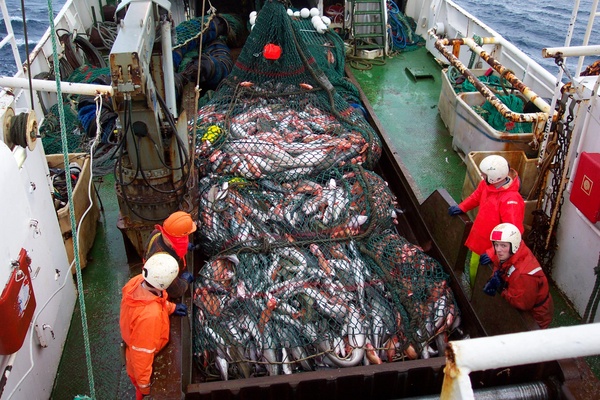Seafoodsource.com
Nicki Holmyard
The Moroccan government recently announced ambitious plans to strengthen its aquaculture industry, aiming to take full advantage of the country’s 3,400 kilometers of marine coastline, which fronts both the Atlantic Ocean and the Mediterranean Sea.
A national fisheries plan, Halieutis, which has been in place since 2009, contains provisions for significant growth and development in aquaculture, alongside sustainable fisheries. However, it was the creation of the National Agency for Aquaculture Development (ANDA) a few years later, that has finally generated new momentum and support for the sector.
Morocco is already the largest maritime fisheries producer in Africa and the 17th-largest producer of seafood in the world, fishing and harvesting a total of around 1.5 million metric tons (MT) of seafood per year. The fishing industry accounts for 58 percent of Morocco’s agro-food exports and seven percent of its total exports. In 2015, the sector generated USD 1.59 billion (EUR 1.29 billion) in exports, according to the National Fisheries Office. The Halieutis plan aims to increase the value of seafood exports to more than USD 3.10 billion (EUR 2.52 billion) by 2020.
Currently, Spain, France, Italy, Germany, Portugal, the United States, the United Kingdom, and Belgium are the top importers of Moroccan seafood.
Fisheries contributes 2.3 percent of Morocco’s GDP and creates direct employment for 170,000 fisherfolk and indirect employment to an additional 500,000 people. It is estimated that three million people in Morocco depend on fisheries for their livelihoods.
Aquaculture was first introduced to Morocco in the 1950s with early sea bass, sea bream, and shrimp farms in the Mediterranean, and began a slow expansion from the 1980s. Cultivation of these species is expected to grow alongside shellfish such as oysters, mussels, abalone, and clams.
The country’s leader, King Mohammed VI, opened the country’s first commercial shellfish hatchery and farm in 2016. Set up by Azura Aquaculture, the two-acre facility is part of a wider program developed under the Halieutis plan, and will contribute to improving the sustainability of resources in the Dakhla-Oued Ed-dahab region on the Atlantic coast. It will also help with the promotion of shellfish farming and the processing and marketing of around 1,000 MT of oysters, clams and abalone. In particular, it is tasked with decreasing the animal health risks related to the import of these species.
Moroccan Secretary of State for Fisheries Mbarka Bouaida said in a December speech at the 15th Europe-North Africa Convention that Morocco’s vision for aquaculture is “to make it an indisputable growth engine that can forge a true blue economy.” (The speech was presented for Bouaida by ANDA Director Majida Maarouf.)
The meeting of government officials, industry, academics, and aquaculture officers from the Food and Agriculture Organisation of the United Nations (FAO), heard of Morocco’s hope that aquaculture will “turn the country into a state rich in ecological diversity, and a model of harmonious growth with a responsible and integrated economy. “
FAO is currently working with the ANDA to help Morocco meet its ambitious goal by assessing the achievements of the new national agency in its first years of operation and by identifying ways forward.
Five aquaculture development zones have been mapped by ANDA, which is currently working through issues such as planning process and consent, legal aspects, stakeholder support, technology, markets and economics, environmental protection, potential effects of climate change, and wider social benefits.
Malcolm Beveridge, who heads up FAO’s Aquaculture Branch within the Fisheries and Aquaculture Department, said he believes that the sector has strong potential to contribute to improving Morocco’s living standards, especially those of the poorest.
“The work in which we are partnering with Morocco will help to ensure that aquaculture develops in an economically, socially, and environmentally sustainable manner,” he said.
However, environmentalists are already positioning to ensure that such words are not hollow and that aquaculture development has strong environmental protection from the Moroccan government and buy-in from the industry. According to Heidi Weiskel, a staff scientist at the Environmental Law Alliance Worldwide (ELAW), who is working with partners in Morocco to protect marine resources and communities from destructive aquaculture projects, there are rumors that hundreds of investors are angling to secure the leases to develop new aquaculture projects in the Bay of Dakhla, on the Atlantic coast.
The aquaculture development plan for this area allows for the establishment of 878 production units over 6,556 hectares in the bays of Dakhla and Cintra, and the remote area between the two bays.
Supervised by NADA, the development is expected to generate around 3,350 direct jobs, and an annual production of more than 115,000 MT at full development.







